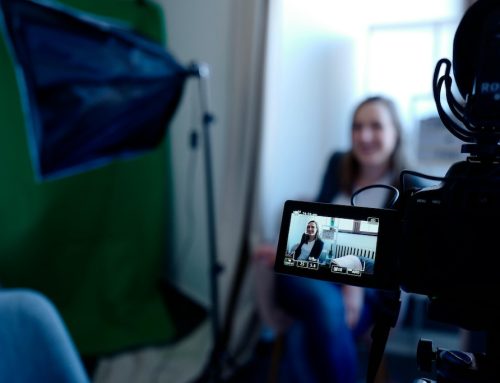How did Glossier become a billion-dollar beauty brand? Seems like quite an unlikely outcome for what started as a blog.
Into the Gloss (Emily Weiss’s blog) wasn’t trying to manufacture influence. But it invited it in. Glossier’s entire identity was co-authored by its audience on social media platforms, primarily Instagram. That sense of ownership turned casual users into advocates and brand evangelists, as The New Yorker documented in 2023.
Now, if you’re staring down a calendar full of empty post slots, you’re probably asking the real question: How do I create content that builds that kind of connection?
That’s what this article is here to unpack.
What’s Wrong With Your Social Media Strategy?
Too many companies still approach social media marketing as a one-way broadcast to showcase features. Product specs, data points, milestones, internal news; it’s the stuff that marketing channels are full of. But how do these kinds of social media posts make viewers feel?
Let’s just say it: most brands on social are talking to themselves.
“We launched this.” “We hit that milestone.” “Check out our new feature!”
When a company feed is just bullet points and product specs dressed up in branded colours, it doesn’t give people any reason to engage.
Meanwhile, people are out there scrolling, looking for something (anything!) that makes them feel seen, understood.
You won’t get there with feature lists.
Start With the Buyer Persona
What is a buyer persona in content marketing? Customer personas are a detailed, research-backed representation of your target audience.
The most effective brands develop multiple personas that align with target market segments, refined through team insight and market research. There are four commonly used buyer persona types:
- Competitive (driven by results and speed)
- Spontaneous (emotion-led and impulse-driven)
- Methodical (analytical and cautious)
- Humanistic (relationship-focused and empathetic)
What to Include in a Persona (And Why It Matters)
A detailed persona doesn’t just help your content team—it helps your sales, product, and web development teams stay aligned on what your customer actually wants.
If you’re building personas without going deep into their actual decision-making process, you’re just playing marketing dress-up.
You also better know where they spend their digital lives and what they are trying to get. Are they doom-scrolling Instagram? Do they want bite-sized carousels or in-depth webinars? Match your content to their consumption style, or don’t bother. And don’t forget their buying power. If your persona doesn’t clarify that, your content might be preaching to the wrong person entirely.
Add in how they speak—tone matters. And finally, know what objections are already brewing in their head before you ever make a pitch. If your messaging doesn’t neutralize resistance before it shows up, it’s dead on arrival.
Content Personalization: The Real Competitive Edge
Here’s another foundational question: What is personalized content marketing? In short, it’s content built around the individual—what they’ve done, what they care about, and what they need next.
One of the best examples of this is Spotify Wrapped. It uses listener data to create a personalized “story” for every user. Your top artists. Your weirdest genre. Your listening minutes. It’s yours—and that’s why it gets shared. Not because it’s flashy, but because it’s personal. It’s a powerful example of how personalization strategy can generate engagement, brand love, and customer loyalty in ways traditional ads never will.
Building this kind of system is more about structure than creativity. That’s where the 4 D’s of personalization come in:
- Data – Know what you’re collecting and why
- Decisions – Use that data to drive content choices
- Design – Present content in formats your audience prefers
- Distribution – Get content in front of the right eyes at the right time
Personalized, relevant content doesn’t have to mean one-to-one. To be fair, not many brands have the kind of infrastructure and budget to go to the lengths that an industry giant like Spotify can. But every business can make efforts to get their content to sound and feel like it wasn’t written for everyone.
Less Posts. More Connection.
Your social media accounts aren’t just billboards. They’re two-way mirrors.
If you really want to cultivate valuable connections with your target customer, an endless stream of posts about product features won’t help your cause.
Start with:
- Leading with value—before you ask for anything in return
- Tapping audience insights from your social tools and CRM
- Matching message tone to each platform (LinkedIn ≠ Instagram)
- Speaking directly to the pain points your audience is already researching online
Explore social media lead generation tactics that actually convert and focus on the platforms your personas already use.
Align Content With Business Outcomes
Posting for the sake of visibility is a waste of time. Content should always point back to business-critical metrics: leads, conversions, revenue. That’s why your social media channels must integrate with broader efforts like SEO, retargeting ads, and email flows.
For example, if a carousel performs well on Instagram, adapt it into a blog post. Build a downloadable checklist from the same theme. Then turn that into a nurture email sequence. Done right, you create a self-reinforcing loop that supports the full customer journey from click to close.
Let Real People Guide Your Strategy
It’s easy to get caught up in tools, templates, and trends. But ultimately, marketing success comes down to how well you understand the person on the other side of the screen. Not just their role. Not just their industry. But what they’re dealing with. What they’re afraid to say out loud. What they’re Googling at 2 a.m.
When your messaging feels like it was made for them is when you stop chasing engagement and start earning it.
If your team needs help translating buyer persona content marketing into a working, measurable content system, get in touch. We’ve helped brands of all sizes turn abstract strategy into real growth—and we can do the same for you.





